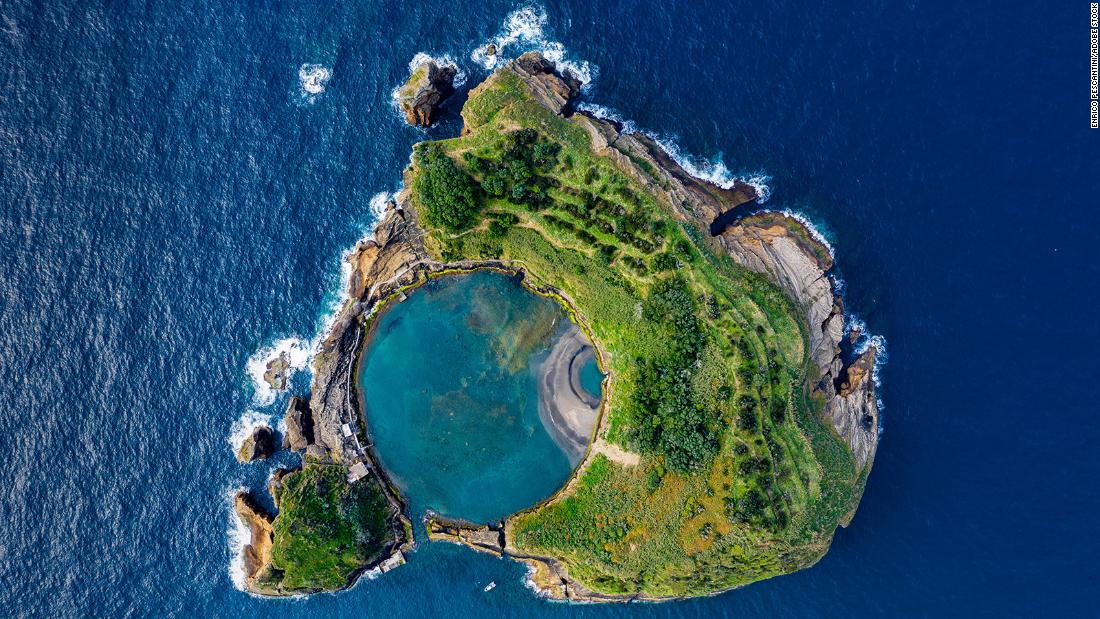(CNN) — Traveling to a paradise on Earth doesn’t necessarily require a long, arduous or perilous journey.
In fact, an unspoiled landscape reminiscent of a fairytale is barely five hours from Boston and about four hours from the United Kingdom. It’s a land where waterfalls cascade down iridescent green slopes; where roads are rimmed with hydrangea hedges; and where craggy coasts are blanketed with black sand beaches.
A lost-in-time quality prevails, whether it’s a hamlet of stone dwellings linked by cobbled paths, or locals who remain true to the old ways of planting crops on fertile plains at the base of sheer cliffs, or riding horse-drawn carts to deliver milk to the cheese factory.
Welcome to the Azores, a necklace of nine enchanting islands that huddle in the middle of the Atlantic but are part of Portugal. The archipelago is an autonomous region located roughly 1,000 miles from the Portuguese mainland. The islands’ thermal pools, lush calderas, crater lakes and steaming geysers all bear testament to the violent volcanic forces that birthed them, yet each isle has a distinctive character where nature in its wildest state prevails.
Azores Airlines flies non-stop to Ponta Delgada on São Miguel Island from Boston, and to Lajes on Terceira with a stopover in Ponta Delgada year-round. United (from Newark) and Azores Airlines (from JFK, on select days) both have summer nonstop service to Ponta Delgada. British Airways offers nonstop, summer service on Saturdays.
After a direct hop to an archipelago seemingly a world away, here’s what to expect on each island:
WESTERN ISLANDS
Flores
Flores is the westernmost island of the Azores. Though its name translates to “flowers,” it’s the abundant bodies of water that most define this shockingly emerald green isle that’s frequently shrouded in fog.
There are seven crater lakes speckling the undulating interior, including the the forest green Lagoa Negra that sits right beside the cobalt blue Lagoa Comprida, with a perfectly placed miradouro (viewpoint) between them.
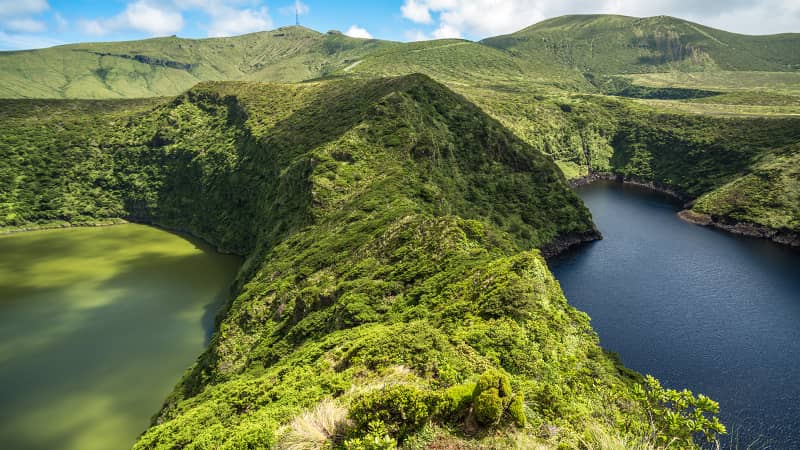
The side-by-side Lagoa Negra, left, and Lagoa Comprida make for a striking scene on Flores.
javarman/Adobe Stock
Among the island’s verdant cliff walls dripping with waterfalls, the powerful Poco do Bacalhau cascades down 300 feet to a petite, swimmable pool.
Corvo
With fewer than 500 inhabitants and one solitary town located on the only parcel of land at sea level, Corvo is the smallest (and most remote) Azorean island, just four miles long and not even three miles wide.
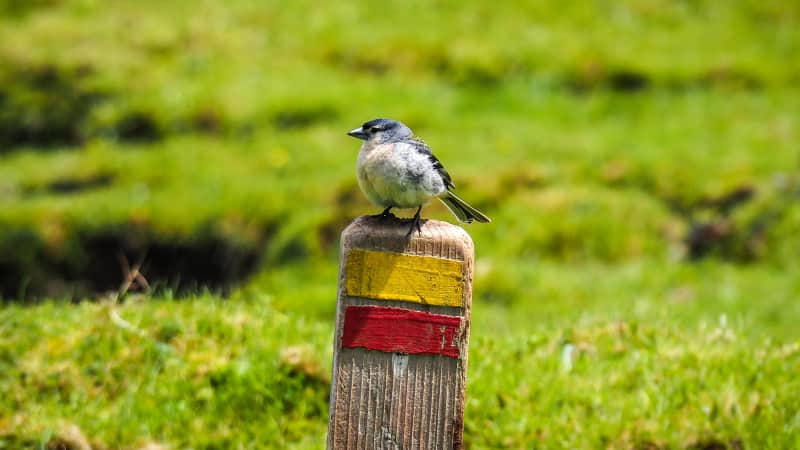
Bird-watching is a popular activity on tiny Corvo.
Jakub/Adobe Stock
Still, this wee island (a remnant of an ancient volcano about 10 miles north of Flores) is a renowned paradise for bird-watchers, who gravitate here especially in the fall, hoping to spot yellow-billed cuckoos, Cory’s shearwaters and many other species.
CENTRAL ISLANDS
Faial
For hundreds of years, sailing vessels have made the capital port of Horta — noted for its boldly painted seawall — a stopover, including those that navigated between the New and Old Worlds in the 16th and 17th centuries.
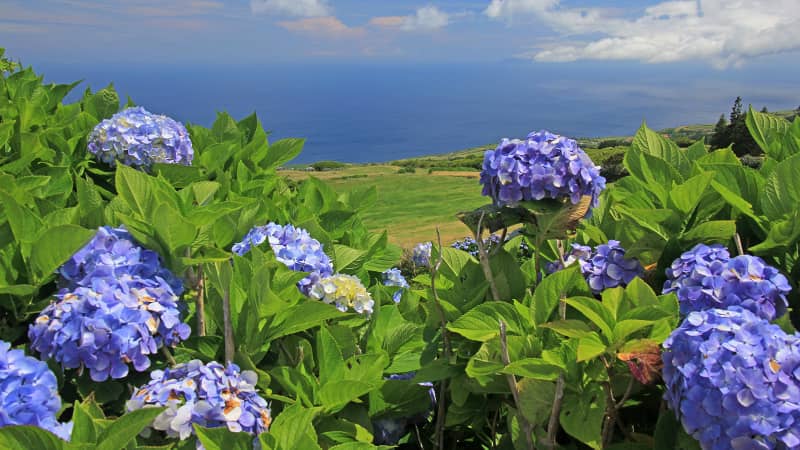
Vivid hydrangeas border roads along the route to Faial’s western end.
Schlierner/Adobe Stock
Soccer ball-sized globes of sky-blue hydrangeas border roads and frame houses along the route to the island’s western end. This desolate, monochromatic area stands in stark contrast to buzzing, colorful Horta.
Pico
The almost 8,000-foot-tall Mt. Pico, Portugal’s highest peak, dominates the landscape on this island.
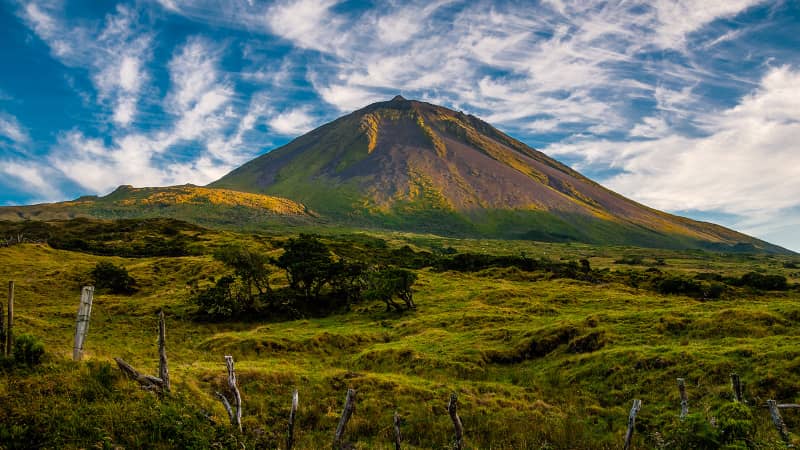
Mount Pico is Portugal’s highest peak at 7,713 feet (2,351 meters).
rvdschoot/Adobe Stock
Here, it seems just about everything is constructed of black basalt lava stone, including the mosaic of corrals surrounding the local grape vines that have warmed and protected them from the island’s blustery, salty breezes for centuries.
São Jorge
Snaking through a landscape of wild heather and Japanese cedar are scenic footpaths that terminate at fajãs, or cliff-backed fertile plains that were formed from landslides and ancient lava flows.
One of the most beguiling is Fajã de Santo Cristo, accessed via a six-mile-long walkable donkey path that winds down from the cloud-covered summit of Serra de Topo. The route meanders past old watermills and gates of gnarled branches to the isolated, waterfront hamlet Fajã de Santo Cristo. Here residents tend terraced gardens growing yams, cabbage, spinach and tomatoes.
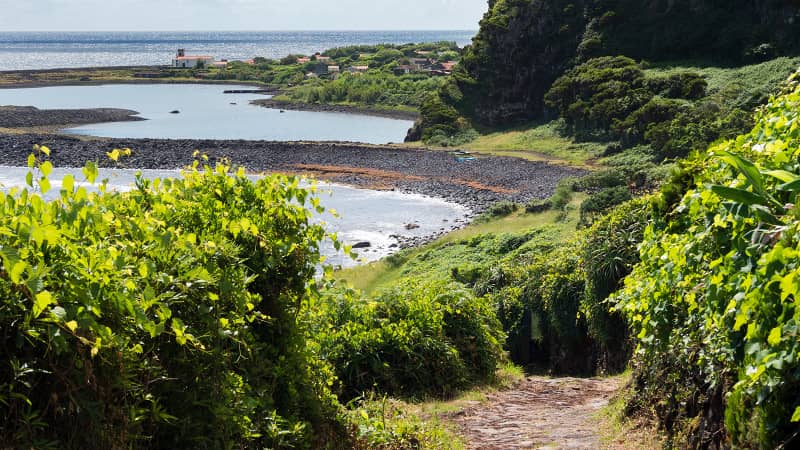
Fajã da Caldeira de Santo Cristo is a fertile plain at the base of a steep slope.
DanitaDelimont.com/Adobe Stock
This coast attracts surfers who come for the point break waves. The island, however, is most renowned for a culinary delicacy: their tangy cow’s milk cheese.
Graciosa
Many of the signature sights on Graciosa provide a dramatic education into the island’s volcanic origins.
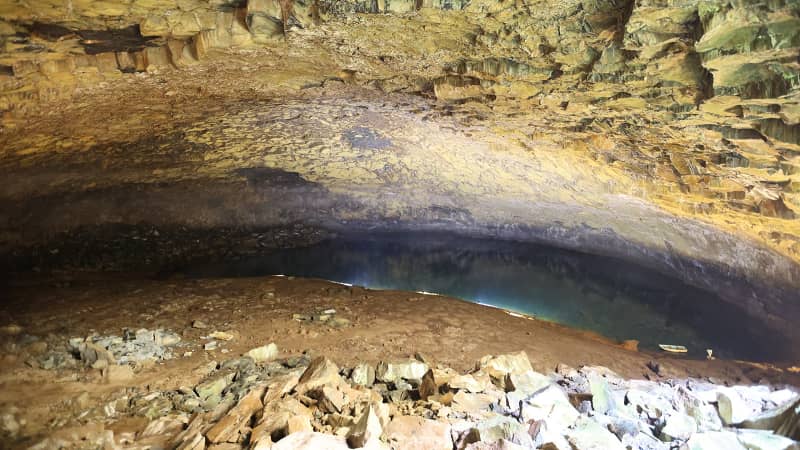
Furna Do Enxofre on Graciosa island is an impressive lava cave.
Stefano/Adobe Stock
The sight at the bottom is surreal. In contrast to the lake at the base brimming with cold rainwater, the cave’s air is saturated with the smell of sulfur, and mud fumaroles bubble and boil at 180 F (82 C). Sunlight pours in through oculi in the ceiling, revealing yellow crystals shining on the boulder-riddled slopes.
Terceira
While Pico’s black basalt gives that island the appearance of black and white brushstrokes, Terceira in many ways uses a Crayola crayon palette.
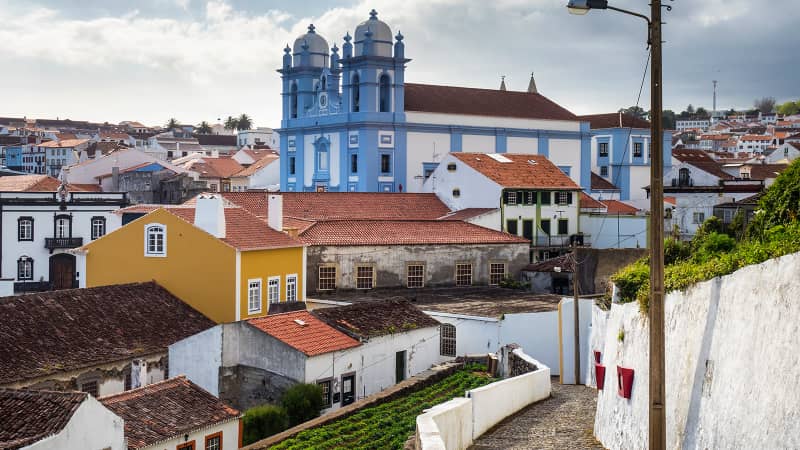
Angra do Heroismo, a UNESCO World Heritage Site, features brightly painted historic buildings.
Jose A. Bernat Bacete/Moment RF/Getty Images
On the north coast, the village of Biscoitos shows off its volcanic origins with natural pools of all sizes and depths puncturing the hardened black lava stretching across the port. Beside these, beach towels, umbrellas and loungers can be set out for a day of sunning and soaking.
EASTERN ISLANDS
São Miguel
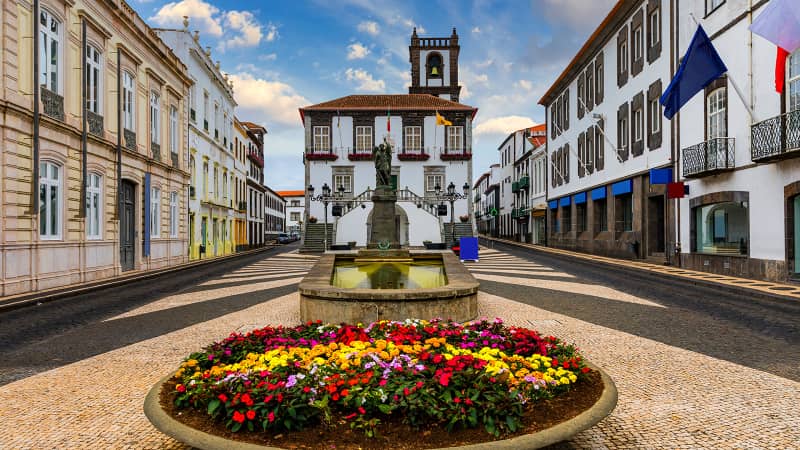
Ponta Delgada is the capital of the autonomous region of the Azores.
daliu/Adobe Stock
It’s home to what’s said to be the world’s oldest commercial greenhouses growing pineapples and Europe’s oldest operating tea plantation.
One of the island’s most heralded landscape is the Furnas Valley, a dormant crater that’s draped with foliage and dotted with reminders of its volcanic past, including inviting hot springs.
Also scenically stunning, with tree ferns and bunkers filled with volcanic sand, is the 18-hole Furnas Golf Club that sits at 1,700 feet above sea level.
Santa Maria
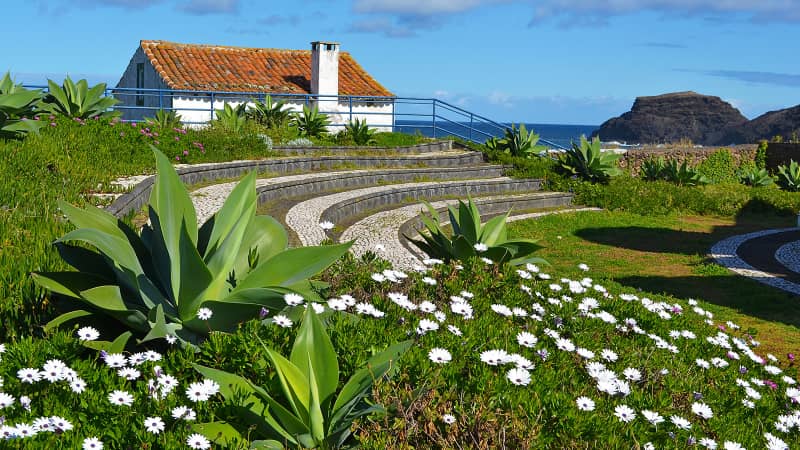
Santa Maria is the most southern island in the Azores, boasting sunshine and golden sand beaches.
Klara Bakalarova/Adobe Stock
Santa Maria, the most southern of the Azores, is not only the sunniest of the islands, but it’s also the only one graced with golden sand beaches.
The greens and blues of the sea, sky and valleys mingle at Miradouro da Pedra Rija, one of many viewpoints that makes for a lovely picnic spot. Forests of Japanese cedar canopy the zig-zagging roads, sometimes beside paths bordered by Azorean blueberries and small orchids.
The hamlet of São Lourenco is especially popular in the summer for its photogenic sandy stretch that’s backed by a tapestry of old vineyards enclosed by black lava stone walls.
Jeanine Barone is a New York City-based travel writer who specializes in Portugal and has visited the Azores many times.
